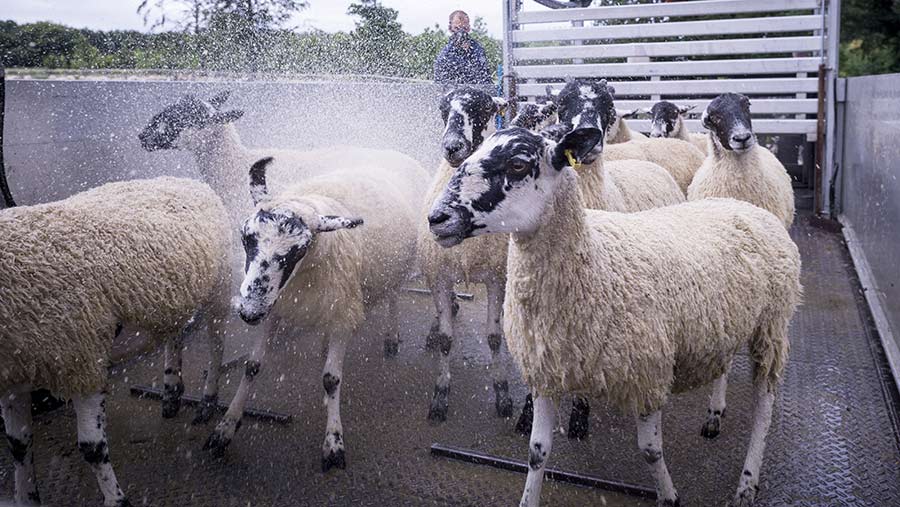Scops group launches mobile sheep dipping code of practice
 © Jim Varney
© Jim Varney A mobile sheep dipping code of practice has been launched to advise on the effective treatment of scab with organophosphate (OP) sheep dip.
Launched by the Sustainable Control of Parasites in Sheep (Scops) group, in conjunction with the National Association of Agricultural Contractors (NAAC), the code will help minimise risks to users and the environment.
Sheep scab is an acute or chronic form of allergic dermatitis caused by the faeces of sheep scab mites (Psoroptes ovis).
Confirmation of resistance in sheep scab mites to injectable macrocyclic lactone (ML) scab treatments has increasingly seen more sheep farmers turning to OP dipping to treat sheep scab.
There is also a growing concern that the use of these products is accelerating resistance to ML in gut-worm populations.
See also: Sheep farmer sees four clear benefits of plunge-dipping
Tighter regulations
In contrast, the number of farmers with their own dipping facilities has continued to fall, due to tighter regulation of the purchase, use and disposal of OP dip wash.
As such, farmers have been turning to professional mobile dipping contractors, highlighting the need for support to those service providers.
The new code has been developed in conjunction with a number of industry partners and is for everyone involved in the dipping process – from prescribers through to the on-farm end-users.
The code of practice gives advice on prescribing and purchasing OP dip, as well as guidance on siting mobile dipping equipment, and the handling and welfare of sheep (see box).
Help to meet high standards
NAAC chief executive Jill Hewitt says: “This code will help sheep farmers and dipping contractors work in partnership to ensure high standards are always met.
“Mutual agreement is vital on sourcing dip, siting the mobile dip and the disposal of the used dip to ensure the whole job is done safely, legally and without harm to the environment.
“A simple written agreement is recommended so that everyone is clear of their responsibilities.”
Highlights from the code
Prescribing
- The prescriber of the OP dip, as well as the contractor collecting it, must have a certificate of competence (NPTC level 2 award in the safe use of sheep dip)
Dipping equipment
- Mobile dipping systems should be at least 10m from watercourses, 50m from wells, springs or boreholes and 30m from watercourses that drain into a river or wetland
- Flood plains should be avoided
- All personal protective equipment should be checked to make sure it doesn’t leak before use
Dipping
- The person dipping, or supervising the process, must hold a certificate of competence (NPTC level 2 award in the safe use of sheep dip)
- All staff must have read and agree to comply with the HSE regulations on dipping, as well as government guidance
- Sheep should have at least 1cm of fleece growth and be dry at the time of dipping and must remain dry for two to four days afterwards
- Sheep must be fully immersed (except head and ears) for no less than one minute, and the head plunged at least once
- Sheep must drain for five minutes afterwards into a dip tank
- Product datasheets must be followed
- No more than one sheep per two litres of the starting capacity can be dipped before the bath is emptied, cleaned and refilled
- Sheep with open wounds should not be dipped
- If sheep are handled within three months of dipping, gloves and protective clothing should be worn
- Sheep should not be drenched with 2-LV (yellow) anthelmintic for at least 14-days prior to and after dipping
- Sheep should not be shorn for three months after dipping
- OP must only be used as a plunge dip.
Disposal
- A written agreement should be made between the farmer and contractor outlining who is responsible for the safe disposal of used dip
- Farmers/contractors can dispose of used dip by spreading it on land if they have an environmental permit. Otherwise, a registered waste carrier must be used
